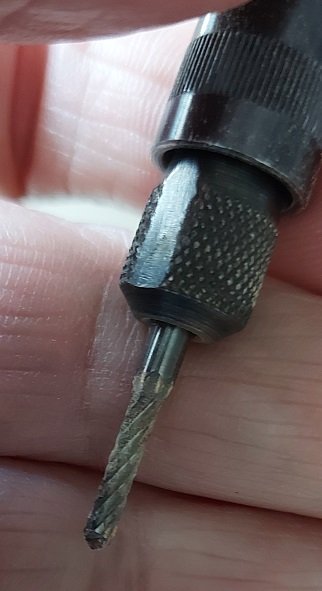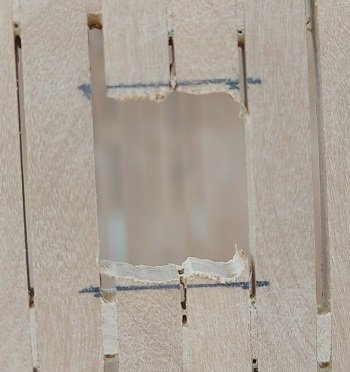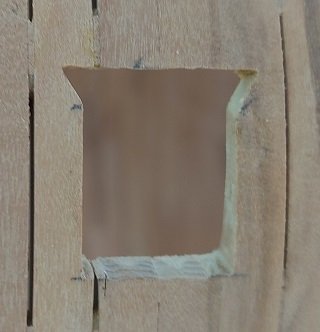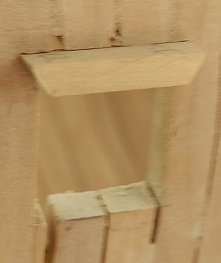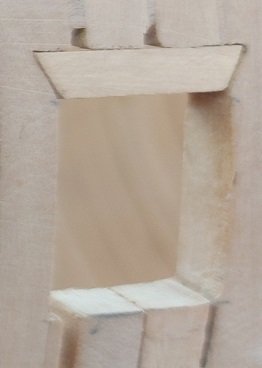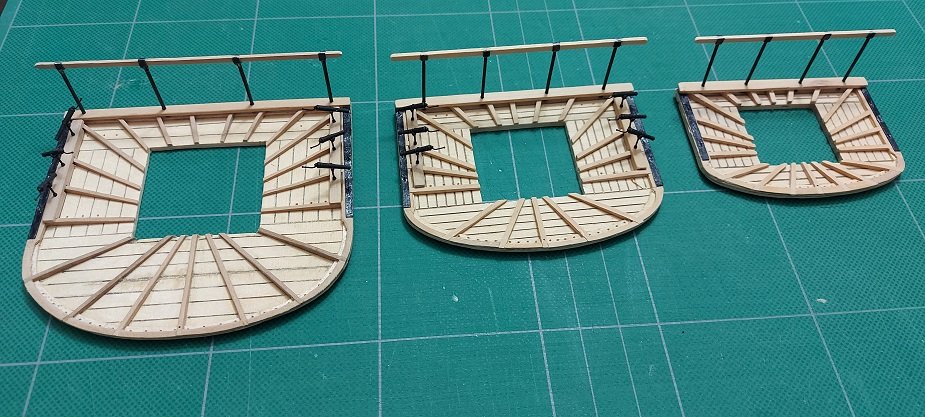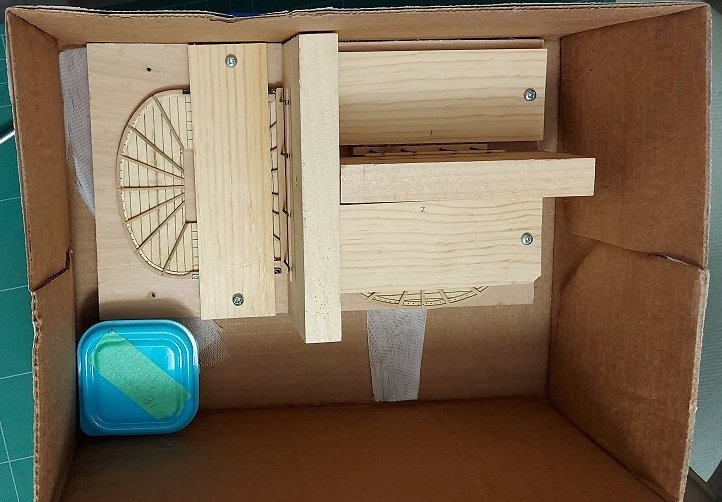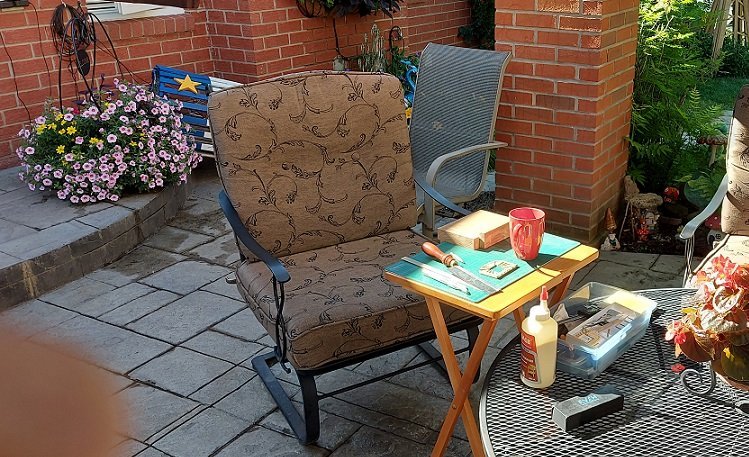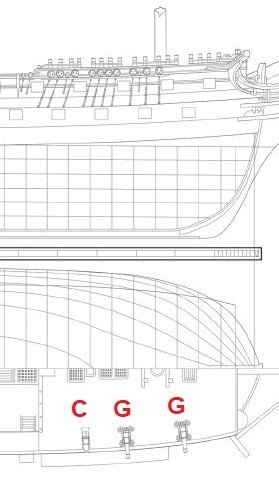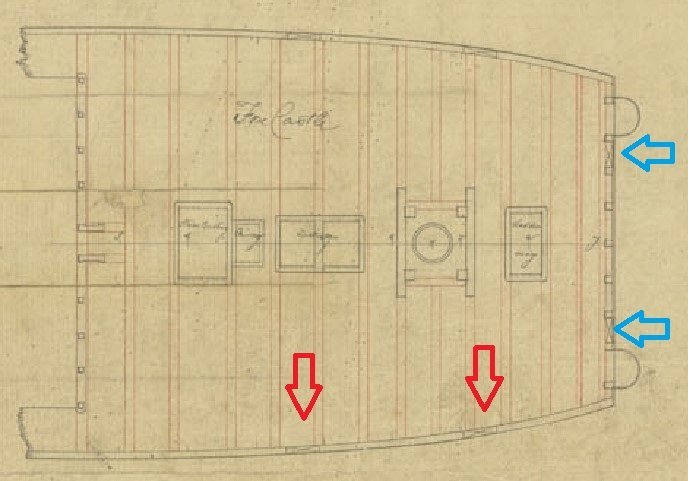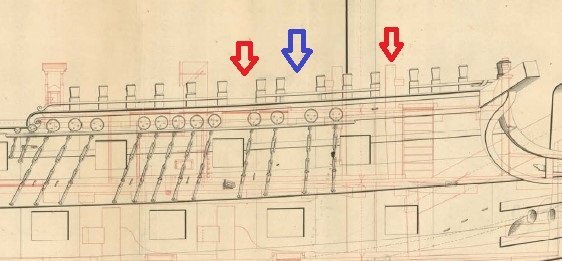-
Posts
2,861 -
Joined
-
Last visited
Content Type
Profiles
Forums
Gallery
Events
Everything posted by AON
-

Golden Hind by Rock_From_Korea - 1:48
AON replied to Rock_From_Korea's topic in - Build logs for subjects built 1501 - 1750
I like how you did the window panes.... I think I may be copying that. -
Nice job! Now for me to remember it all. I was concerned about the metal end of your clamp maring the plank when turned to tighten and was imagining various ways to avoid it ... and then you showed the simple soft wooden nose piece add on solution. Simple and effective... like everything you show us. Thank you.
- 1,127 replies
-
There seems to be as many ways to cut a gunport as there are ways to make mistakes. I had to find a method I was comfortable with... this after all is my first time and I honestly wasn't looking forward to cutting holes into all this work I just got done. After having tooled around long enough trying my hand at various methods of cutting the gunports I finally brought the ship outside and started cutting. I decided to use a rotary combination drill-saw bit in the flex-cable of my dremel. The bit has a drill cutter point and rotary cutting notches on the shaft. It was plunged through at the centre of the square outline, holding a level and square as I could I cut up to within about 1/16" of my upper cut line (top of the upper cill) then changed direction left, then back to the right to free the top of the frames, then back to the middle, then down to within 1/16" of the bottom cut line (bottom of the lower cill) then cut across to pop them off. So far I've only been working on upper cills. I wrapped sand paper over my 1/2" wide flat file and holding it level, I sanded to the upper and lower lines. I then marked the thickness (height) of my upper cill onto the edge of the frames at each side so I knew where the notch had to stop. I used my mini triangular file to sideways shape the upper cill notch. This was cleaned up a bit with a sharp X-acto knife. In the photo below you will see the sides need to be opened to get the proper opening width. I then took my cill timber and cut it to a bit more than 1/8" the required length. This was held to the opening and I pencil marked off the bottom distance of the notch to cut away. This was cut away in bites with a chisel. Fitted to the opening and sanded to look right on a piece of sand paper laying flat on the table top. The far side was then cut and shaped to fit likewise. Below you will see it dry fitted.... almost there. Then after some more fiddling about it slid into place. Apply some glue. Assemble. Let sit 20 minutes to grip. Sand flush. Done. On to the next one. I will post my lower cill installation when I've get around to having a few done and I can (of course) pick out a better looking effort. (and yes... the aft gunports are a wee bit skewed as they should be! 🤪 )
-
I completed the other two lower mast tops (fore and mizzen). Below are all three side by side with swivel guns temporarily installed on the main and fore tops. Then I clamped them down onto my storage board with the rails protected against a secure upright block. Put this into the cardboard box and put that into the box with my mast storage rack. All safely tucked away.
-

Golden Hind by Rock_From_Korea - 1:48
AON replied to Rock_From_Korea's topic in - Build logs for subjects built 1501 - 1750
Looking very good! 😊 -
As it was nice out today I relocated to the patio. Working on the lower fore and mizzen mast tops. Also finished reading A History of Canada in Ten Maps by Adam Shoalts and was surprised by the last chapter describing John Franklin's three assignments to map the coastlines and islands of Canada's arctic. He was a midshipman on the Bellerophon at Trafalgar. The first was a disaster where many died and he and those few survivors almost starved to death. If it weren't for the kindness of the local indigenous people he wouldn't be a footnote to history. He managed his second assignment four years later (1825), but hadn't learnt his lesson from the first, how to be a team leader and listen to those who had survived the rigours of the wilderness of Canada. Everyone knows how the last assignment (HMS Erebus and Terror 1845-47) ended, stuck in the ice, once again resulting in some resorting to cannibalism and starving and freezing to death. The late great John Franklin was described by the survivor's of his first expedition as incompetent! Interesting.
-
You might avoid some scale problems by assembling your piecing in the 3D program and seeing the fit before you print. I admit sometimes the file size can be large, but the parts can be "shrink wrapped" so they are just one block/shell placed on another block/shell to reduce the size of the overall assembly file. On the other side of that coin, this did offer you an opportunity to tweak it up some!
-
I like the framed photo on the wall of the last one
-
Lieste had mentioned a figure in Winfield of an 80 gun ship with two carronades and four guns on the forecastle. The only book I have by Rif Winfield is The 50-Gun Ship and the figure is not in that. I found a copy of the very expensive (almost $500) book British Warships in the Age of Sail, 1793–1817: Design, Construction, Careers and Fates by Rif Winfield on Google that allowed viewing of a very few selected pages. Lieste confirmed this was the book and he sent me the image which is of HMS Foundroyant launched in 1788. THANK YOU! She also had the 6 carronades on the Roundhouse. The count of 80 guns excluded the carronades. They were extra. Carronades were not counted unless they replaced guns. What is really nice is the image shows a top view of the deck with the guns so there is no question as to their location. Via Google I found an image of HMS Illustrious in the selected viewing pages of the book. She is a 74 gun ship launched in 1799, and she has the extra ports on the forecastle for carronades. I also found HMS Swiftsure of 1800, an 80 gun ship with the extra ports.
-
The documents mentioned in my above posting are ADM 52/2752, ADM 52/2779 and ADM 52/3359. I never thought there was anything but the 74 guns. I never searched further once I found she wasn't on the list of ships issued carronades. Then I discovered the swivel guns. Now there are the carronades. So short answer is no I hadn't but now I shall. How did you know they mentioned the guns before got your hands on copies? were they posted on PRO to read?
-
Can you post that portion of the image? I'd very much like to see it. In my mind I can visualize the carronade mounted on the cat tail beam that runs athwartships aft of the head and on top of the forecastle deck as I see the cat tail beam might be an impediment to the carriage of the 9 Pdr cannon. Then the other concern might possibly be the bowsprit, jib boom and yards rigging being in the line of fire(???) .
-
I received a response from Kews. They sent me links to help me search. I spent 3 hours searching from 4AM to 7AM. I found 3 documents, masters logs for the periods of 1790-91, 1793-94 and 1794-95. These may or may not have any mention of guns and there placement. I did not find any mention of Ordnance or Gunner's records for this ship or her sister ships. I tried looking at models and figures at NMM.... I hate the new layout.
-
I copied out the documents in an attempt to zoom in to read but that made them a little fussy. As best I can tell it reads that the 74`s had 12 Pdr carronades fore and aft in 1779. I have a statement from the boy that the 74 I`m interested in had 18 Pdr aft and 32 Pdr forward. If I can get this as a document from the gunner (his father) and it gives the location other than ``forecastle`` I`m golden.
-
Yes Mark (and Druxey) I've read that also. I've also read a listing of ships that had carronades... and the Bellerophon was not on the list... but then how was it they got tossed if they weren't there and why would the "youngster" , the gunner's son, say 74's had 82 guns when he was on the Bellerophon with his father? I'll read your images when I get inside and on my computer... on my phone at the moment.
-
Morgan, I`ve contacted The National Archives (Kews) to attempt to get the records by John Hindmarsh Sr. , the first gunner assigned to Bellerophon. He was with her for about 10 years. Their web page states a 10 day wait for a response is typical. This I do not mind as I am quite some way from installing any guns. I hope they have something. If not I`ll ask about the sister ships in the same time period. Thank you.
-
Below is an image of the Goliath forecastle. The red arrows are the locations of the 9 Pdrs even though the aft gun location has a rail drawn through it. The blue arrow might be the location for the carronade. There is one other possible location further aft where you see a similar gap between deadeyes which offers more room between guns than that of the blue arrow between the red arrows. These two possibilities are speculation on my point.
About us
Modelshipworld - Advancing Ship Modeling through Research
SSL Secured
Your security is important for us so this Website is SSL-Secured
NRG Mailing Address
Nautical Research Guild
237 South Lincoln Street
Westmont IL, 60559-1917
Model Ship World ® and the MSW logo are Registered Trademarks, and belong to the Nautical Research Guild (United States Patent and Trademark Office: No. 6,929,264 & No. 6,929,274, registered Dec. 20, 2022)
Helpful Links
About the NRG
If you enjoy building ship models that are historically accurate as well as beautiful, then The Nautical Research Guild (NRG) is just right for you.
The Guild is a non-profit educational organization whose mission is to “Advance Ship Modeling Through Research”. We provide support to our members in their efforts to raise the quality of their model ships.
The Nautical Research Guild has published our world-renowned quarterly magazine, The Nautical Research Journal, since 1955. The pages of the Journal are full of articles by accomplished ship modelers who show you how they create those exquisite details on their models, and by maritime historians who show you the correct details to build. The Journal is available in both print and digital editions. Go to the NRG web site (www.thenrg.org) to download a complimentary digital copy of the Journal. The NRG also publishes plan sets, books and compilations of back issues of the Journal and the former Ships in Scale and Model Ship Builder magazines.




